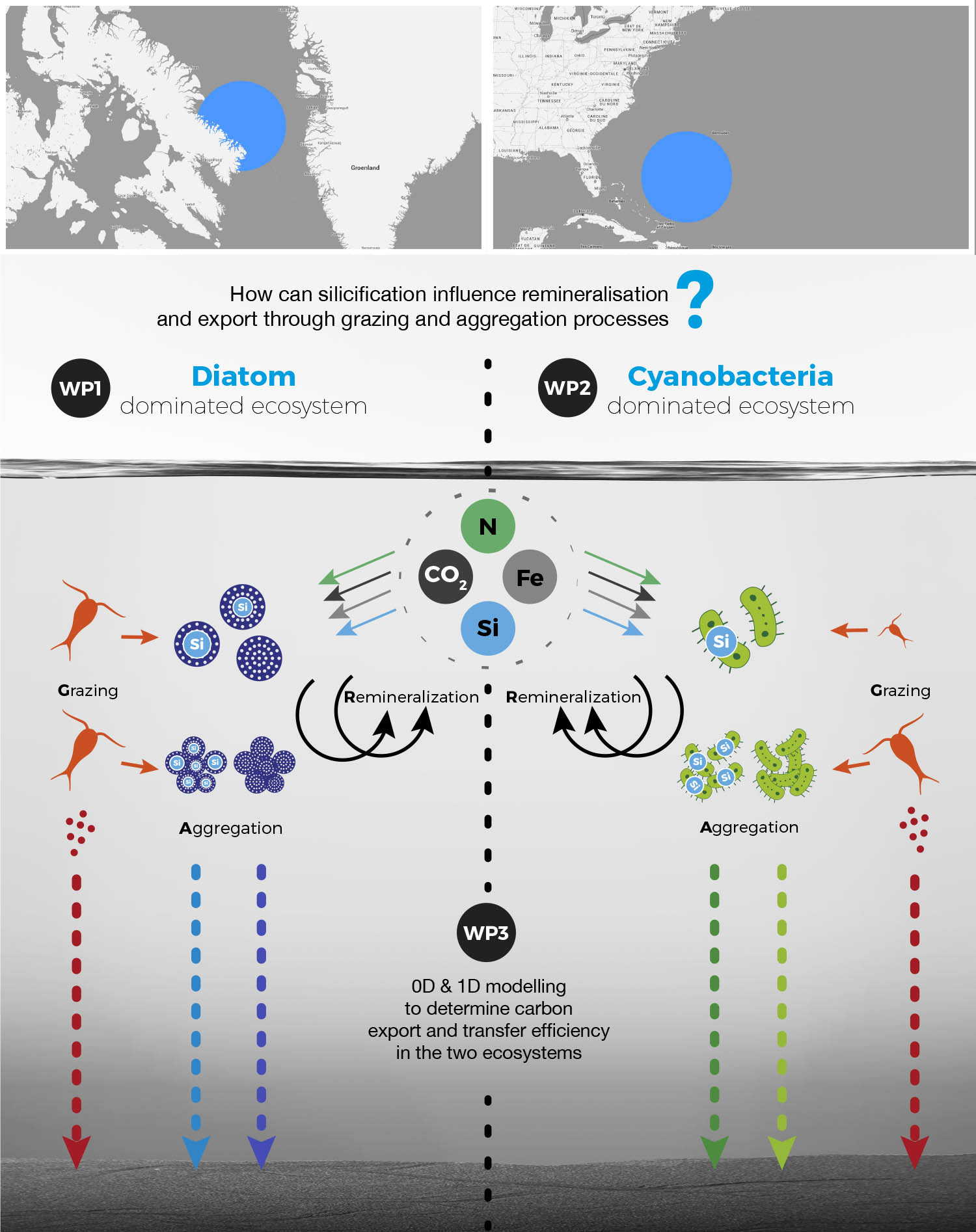
Copyright : Laboratoire LEMAR- 2018
Brivaëla Moriceau (LEMAR)
National
![]()
Start Date
03/04/2025
End Date
03/04/2025
https://www.researchgate.net/project/BioPSis-The-Biological-Pump-of-Carbon-2-key-silicifiers
The ocean is an important regulator for climate and thanks to its biological pump, current atmospheric carbon concentrations are lower. Diatoms are microalgae capable of forming beautiful glass shells in just a few hours. These phytoplankton species dominate coastal, polar and upwelling systems and play an essential role in the biological carbon pump. Their biogenic silica frustules are denser than the surrounding environment and ballast the particles responsible for export: the aggregates formed at the surface and the fecal pellets. Global models predict that global warming will amplify nutrient limitations in surface waters and that the structure of phytoplankton communities will change in favour of cyanobacteria. Cyanobacteria dominate ocean areas where nutrients are less concentrated (oligotrophic areas). However, their role in the biological carbon pump has long been underestimated and the mechanisms controlling it remain poorly studied. A few years ago, researchers showed that, like diatoms, cyanobacteria can accumulate silicon, form colonies or even aggregates and are significant prey for zooplankton organisms.
The BioPSis project aims to characterize the processes driving the export and transfer of C and their variability in response to nutrient limitations that may become more pronounced in the future. To this end, BioPSis will focus on two contrasting ecosystems: the Arctic Ocean, characterized by recurrent diatom blooms, and the Sargasso Sea, dominated by cyanobacteria.
We investigate the impact of nutrient limitations (1) on the structure of diatom bSiO2 and on silicon accumulation in cyanobacteria, (2) on the ability of diatoms and cyanobacteria to form aggregates and on their sedimentation rates, and (3) on zooplankton grazing.
Publications BIOPSIS:
L’activité alimentaire des copépodes modifie la dynamique d’agrégation des diatomées et leur efficacité d’export:
Toullec et al. 2019 Copepod Grazing Influences Diatom Aggregation and Particle Dynamics.
Moriceau et al. 2018 Copepods Boost the Production but Reduce the Carbon Export Efficiency by Diatoms
La thèse de Jordan Toullec sur les thématiques de BIOPSIS est disponible ici !

#top .avia-gallery.av-av_gallery-a5ea7f1d8bdf499d02b0fae0f8548ea4 .avia-gallery-thumb a{ width:20%; }

 Paddle
Scroll to top
Paddle
Scroll to top